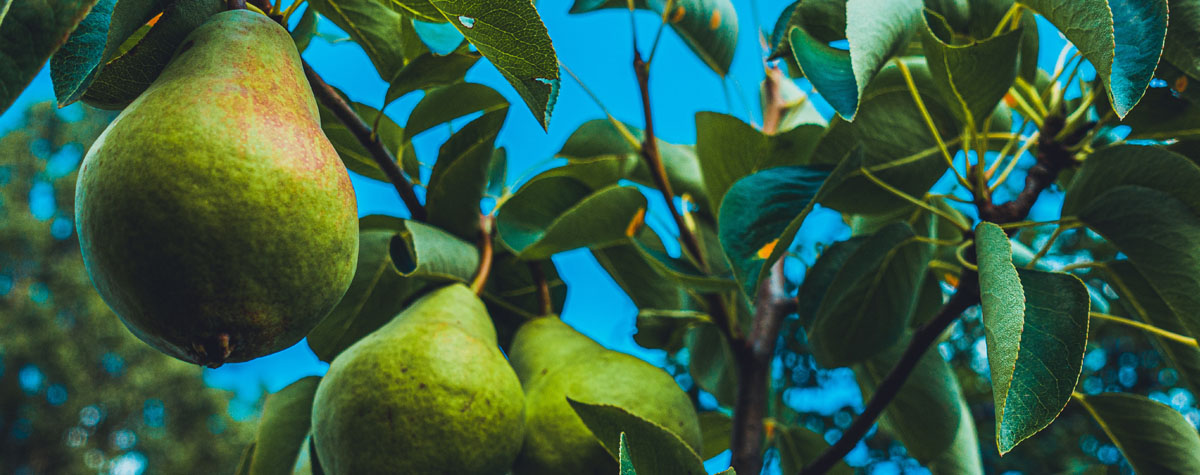We are not required to state a shelf-life on a wine label and our focus during the production process is on making our wines chemically and microbiologically stable, but what about aroma stability?
Is it okay to make a statement on a label along the lines of “this Pinot Blanc displays a lovely fresh pear aroma” and then, after 12 months in bottle, the consumer tastes the wine and finds no hint of pear – or the fresh pear aroma has become flabby?
Taken to the extreme, should the text read something like this: “At the time of bottling, this Pinot Blanc had a fresh pear aroma, however we make no guarantees that in 6 months this aroma will still be present”? I hope not!
An alternative is to provide a recommended maximum cellaring time. For example: “This wine will be at its best within 24 months of bottling.” However, this won’t help much if the aroma compounds don’t hang around that long. To illustrate my point, let’s look more closely at pear aroma compounds…

Pear aroma compounds
In a recent study from China, Wang C 2019 looked at aroma compounds in five different pear varieties. Here are the key outcomes relevant to pear aroma in wine:- 241 volatile aroma compounds were identified in fresh pears;
- The primary compound types were esters (101), alcohols (20) and aldehydes (28);
- The varieties varied significantly in volatile aroma composition (Packham had the lowest concentration);
- Many of the key compounds identified in this study also occur in grapes and wine (see the list at the foot of this article).
In a study from Australia looking at the potential of Cypriot cultivars for planting there, Copper A W 2019 identified compounds influencing pear aroma and also the effect of pear aroma on consumer hedonic (pleasure) ratings. These compounds are also included in the list below.
So, given the large number of aroma compounds that could be associated with pear aroma and the variability between the aroma profiles of different pear varieties, is the descriptor “pear” adequate or do we need to break it down further?
In a study from Austria on 102 commercial Pinot Blanc wines, Philipp C 2019 looked intensively at pear aroma. Here are the key outcomes:
- 8 esters (ethyl (E,Z)-2,4 decadienoate, methyl (E)-geranoate, isoamyl acetate, ethyl hexanoate, ethyl octanoate, isoamyl octanoate, ethyl decanoate, and ethyl dodecanoate) out of a total of 100 aroma compounds were found to be associated with pear aroma;
- Ethyl (E,Z)-2,4-decadienoate and methyl(E)-geranoate were found in Austrian wines for the first time;
- An expert sensory panel related the 8 compounds to the following, more precise, descriptors – fresh pear, exotic pear candy, overripe pear, cooked pear or oily waxy pear-like, and identified differences in their aroma expression;
- Isoamyl acetate (exotic pear candy) content reduced in wine during bottle storage (6 months);
- Increased alcohol level was correlated to overall pear ‘odour activity value’.
Learn more about wine aromas here:
Pear and blackberry aromas have a lot in common
Compounds found in wine that are associated with the aroma of pears and/or pear aroma in wine:• Aldehydes:C6:Hexanal (Li G 2012)
• Acetate esters:C3:Methyl acetate (Wang C 2019)
• Acetate esters:C4:Ethyl acetate (Wang C 2019)
• Acetate esters:C5:Propyl acetate (Wang C 2019)
• Acetate esters:C6:Butyl acetate (Wang C 2019, Flavornet 2019)
• Acetate esters:C7:3-methylbutyl acetate (isoamyl acetate) (Philipp C 2018, Wikipedia 2019)
• Acetate esters:C8:Hexyl acetate (Polesello A 1980, Li G 2012, Philipp C 2018, Wang C 2019, Copper A W 2019)
• Acetate esters:C9:Phenylmethyl acetate (Wikipedia 2019)
• Butyrate esters:C8:Butyl butanoate (Philipp C 2018)
• Fatty acid ethyl esters:C10:Ethyl octanoate (Philipp C 2018, Wikipedia 2019, Copper A W 2019)
• Fatty acid ethyl esters:C11:Methyl decadienoate (Wang C 2019)
• Fatty acid ethyl esters:C12:Ethyl decadienoate (Heinz D E 1965, Zierer B 2016, Wang C 2019, Flavornet 2019)
• Fatty acid ethyl esters:C12:Ethyl decanoate (Philipp C 2018, Copper A W 2019)
• Fatty acid ethyl esters:C14:Ethyl dodecanoate (Philipp C 2018)
• Fatty acid ethyl esters:C6:Ethyl 2-methylpropanoate (Philipp C 2018)
• Fatty acid ethyl esters:C6:Ethyl butanoate (Li G 2012)
• Fatty acid ethyl esters:C7:Ethyl 2-methylbutanoate (Li G 2012)
• Fatty acid ethyl esters:C7:Ethyl pentanoate (Philipp C 2018)
• Fatty acid ethyl esters:C8:Ethyl hexanoate (Li G 2012, Philipp C 2018)
• Fatty acid methyl esters:C13:3-Methylbutyl octanoate (Philipp C 2018, Wikipedia 2019)
• Fatty acid methyl esters:C14:Linalyl butanoate (Flavornet 2019)
As an aside, it was interesting to realise that while compiling this list how much overlap there is with the list for blackberry associated aroma compounds. That’s not an association I had thought of before.
James Wright is an international viticulture and management consultant and author of www.vitisynth.com and the newsletter VitiSynthesis.













.png)






